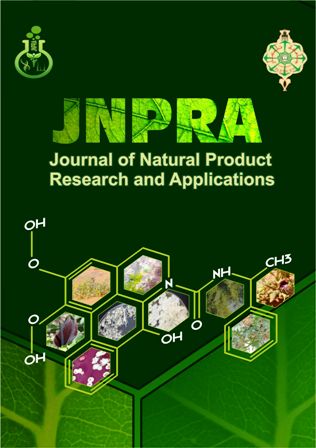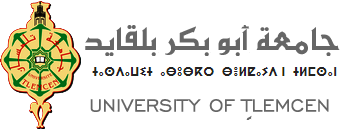Effects of exposure of chlorpyrifos-ethyl on metabolism and oxidative damage in rats and their offspring
DOI:
https://doi.org/10.46325/jnpra.v1i03.25Keywords:
Chlorpyrifos Ethyl; Pregnancy; Oxidative damage; Metabolism.Abstract
Chlorpyrifos-ethyl (CE) is one of the most widely used organophosphorus insecticides for industrial, agricultural and public health purposes. The aim of the study was to evaluate the effect of CE exposure via gavage on metabolic and redox status in pregnant, lactating rats and their pups at weaning. The oral administration of this pesticide at doses of 1 mg/kg of body weight No Observed Adverse Effects Level (NOAEL), 5.4mg/kg b.wt (1/25LD50) and 13.5 mg/kg b.wt (1/10LD50) was given 1day/2 to female rats during the entire gestation and lactation period. Plasma biochemical parameters as well as lipid profiles and oxidative stress markers were determined. Oral CE exposure induced an increase in plasma glucose, urea, creatinine and lipid status levels in mothers at parturition (day 0) and at the end of lactation (day21) and in their offspring at weaning (day21). An altered oxidant/antioxidant status marked in mothers treated by the insecticide at day 0 and day 21 and these disturbances were also seen in their offspring. In conclusion, different doses CE exposure induced several metabolic and redox alterations leading to maternal physiological impairments and to offspring metabolic changes. CE should be used with caution especially during pregnancy and lactation period.
References
Acker, C.I., & Nogueira, C.W. (2012). Chlorpyrifos acute exposure induces hyperglycemia and hyperlipidemia in rats. Chemosphere, 89, 602–608.
Aebi, H. (1984) ). Catalase in vitro. Methods Enzymology, 105, 121–126. .
Akande, M.G., Aliu, A.Y., Ambali, S.F., & Ayo, G.O. (2016). Co-treatment of chlorpyrifos and lead induce serum lipid disorders in rats: Alleviation by taurine. Toxicol Ind Health 32, 1328-34.
Al-Attar, A.M., & Al-Taisan, W.A. (2010). Preventive effects of black seed (Nigella sativa) extract on Sprague Dawley rats exposed to diazinon. Aust. Journal of Basic & Applied Sciences , 4, 957–68.
Ali, A.R.A., & Ismail, S.H. (2012). Protective effect of honey against amikacin-induced nephrotoxicity in rats. Iraqi Journal of Pharmaceutical Sciences, 21, 85–93.
Ambali, S.F., Shittu, M., Ayo, J.O., Esievo, K.A.N., & Ojo, S.A. (2011). Vitamin C Alleviates Chronic Chlorpyrifos Induced Alterations in serum Lipids and Oxidative Parameters in Male Wistar Rats. Americain Journal of Pharmacology and Toxicology, 6, 109–118.
Attia, A.A., El Mazoudy, H.R., & El-Shenawy, N.S. (2012). Antioxidantt role of propolis extract against oxidative damage of testicular tissue induced by insecticide chlorpyrifos in rats. Pesticide Biochemistry and Physiology, 103, 87–93.
Bonvallot, N., Canlet, C.A., Estrada, F.B., Gautier, R., Tremblay-Franco, M., Chevolleau, S., Cordier, S., & Cravedi, J.P. (2018). Metabolome disruption of pregnant rats and their offspring resulting from repeated exposure to a pesticide mixture representative of environmental contamination in Brittany. PLoS. One , 13(6), e0198448.
Burstein, M., Fine, A., & Atger, V. (1989). Rapid method for the isolation of two purified subfractions of high-density lipoproteins by differential dextran sulfate magnesium chloride precipitation. Biochemistry, 71, 741–746.
Draper, H., & Hadley, M. (1990). Malondialdehyde determination as index of lipid peroxidation. Methods in Enzymology, 186, 421–31.
El-Banna, S.G., Attia, A.M., Hafez, A.M., & El-Kazaz, S.M. (2009). Effect of Garlic Consumption of Blood Lipid and Antioxidant Parameters in Rats Males Exposed to Chlorpyrifos. Slovak Journal of Animal Science, 42, 111–117.
El-Demerdash F.M. (2011). Lipid peroxidation, oxidative stress and acetylcholinesterase in rat brain exposed to organophosphate and pyrethroid insecticides. Food and Chemical Toxicology, 49, 1346–1352.
El-Demerdash, F.M., & Nasr, M.H. (2014). Antioxidant effect of selenium on lipid peroxidation, hyperlipidemia and biochemical parameters in rats exposed to diazinon. Journl Trace Element Medicine Biology, 28, 89–93.
Goel, A., Dani, V., & Dhawan, D.K. (2007). Zinc mediates normalization of hepatic drug metabolizing enzymes in chlorpyrifos- induced toxicity. Toxicology Letters, 169, 26–33.
Hussein, H.M., Abdou, H.M., & Yousef, M.I. (2013). Cypermethrin induced damage in genomic DNA and histopathological changes in brain and haematotoxicity in rats: the
protective effect of sesame oil. Brain Research Bulletin, 92, 76–83.
Joshi Apurva Kumarh, R., & Rajini, P.S. (2009). Reversible hyperglycemia in rats following acute exposure to acephate, an organophosphorus insecticide: role of gluconeogenesis.
Toxicology, 257, 40–45.
Kenfack, A., Watcho, P., Ngouba, F., Tchoumdoue, J., & Kamtchouing, P. (2007). Influence du chlorpyriphos-éthyl sur quelques paramètres de reproduction chez le rat male albinos exposé pendant le développement post natal. International Journal of Biological and Chemical Sciences, 3, 237–243.
Lasram, M.M., Bini Dhouib, I., Annabi, A., El Fazaa, S., & Gharbi, N. (2014). A review on the molecular mechanisms involved in insulin resistance induced by organophosphorus pesticides. Toxicology, 232, 1–13.
Ma, P., Wu, Y., Zeng, Q., Gan, Y., Chen, J., Ye, X., & Yang, X. (2013). Oxidative damage induced by chlorpyrifos in the hepatic and renal tissue of Kunming mice and the antioxidant role of vitamin E. Food and Chemical Toxicology, 58, 177–183.
Mansour, S.A., & Mossa, A.H. (2009). Lipid peroxidation and oxidative stress in rat erythrocytes induced by chlorpyrifos and the protective effect of Zinc. Pesticide Biochemistry and Physiology, 93, 34– 39.
Mansour, S.A., & Mossa, H.A. (2010). Oxidative damage, biochemical and histopathological alterations in rats exposed to chlorpyrifos and the antioxidant role of zinc. Pesticide Biochemistry and Physiology, 96, 14–23.
Mansour, S.A., & Mossa, H.A. (2011). Adverse effects of exposure to low doses of chlorpyrifos in lactating rats. Toxicology and Industrial Health, 27, 213–224.
Mc Collister, S.B., Kociba, R.J., Humiston, C.G., Mc Collister, D.D., & Gehring, P.J. (1974). Studies of the acute and long-term oral toxicity of chlorpyrifos. Food and Cosmetict Toxicology, 12, 45–61.
Nelson, S.K., Bose, S.K., Grunwald, G.K., Myhill, P., & Mc Cord, J.M. (2006). The induction of human superoxide dismutase and catalase in vivo: a fundamentally new approach to antioxidant therapy. Free Radical Biology & Medicine, 40, 341–347.
Nisar, N.A., Sultana, M., Raina, R., Waiz, H.A., Baba, N.A., Ahmed, I., & Zargar, F.A.(2013). Experimental Studies on the effect of Chlorpyrifos and Lead Acetate on Biochemical Parameters in Wistar Rats with Special Reference to Ameliorative Effect of Vitamin C. The Proceedings of the National Academy of Sciences, India, Section B: Biological Sciences , 84(4).
Orabi, S.H., Elbialy, B.E., & Shawky, S.M. (2013). Ameliorating and Hypoglycemic effects of Zinc against Acute Hepatotoxic Effect of chlorpyrifos. Global Veterinaria, 10, 439–446.
Ranibar, A., Solhi, H., Mashayeki, F.A., Susanabdi, A., Razaei, A., & Abdollahi, M. (2005). Oxidative stress in acute human poisoning with organophosphorus insecticides; a case control study. Environmental Toxicology and Pharmacology, 20, 80–91.
Reygner, J., Lichtenberger, L., Elmhiri, G., Dou, S., Bahi-Jaber, N., Rhazi, L., Depeint, F., Bach, V., Khorsi-Caue, H., & Najar, L. (2016). Inulin supplementation lowered the metabolic defects of prolonged exposure to chlorpyrifos from gestation to young adult stage in offspring rats. PLoS One 11(10), e0164614.
Rezg, R., Mornagui, B., Kamoun, A., El-Fazaa, S., & Gharbi, N. (2007). Effect of subchronic exposure to malathion on metabolic parameters in the rat. CR Biologies, 330,
Sidhu, I., Bhatti, J.S., & Bhatti, G.K. (2014). Modulatory action of melatonin against chlorpyrifos induced hepatotoxicity in Wistar rats. Asian Journal of Multidisciplinary Studies, 2, 123–131.
Syed, F., John, P.J., & Soni, I. (2016). Neurodevelopmental Consequences of gestational and lactational exposure to pyrethroids in rats. Environmental Toxicology, 31, 1761–1770.
Tanvir, E.M., Afroz, R., Alamgir Zaman Chowdhury, M., Ibrahim Khalil, Md, Sabir Hossain, Md, Abdurrahman, Md, Harunur Rashin, Md, & Siew Hua Gan. (2015). Honey has a protective effect against chlorpyrifos-induced toxicity on lipid peroxidation, diagnostic markers and hepatic histoarchitecture. European Journal and Integrative Medicine, 7, 525–533.
Uchendu, C., Ambalia, S.F., Ayo, J.O., Lasisi, I.O.., & Umosen, AY. (2013). Subacute chlorpyrifos induced alterations in serum lipids and some oxidative stress biomarkers in male Wistar rats: beneficial effect of acetyl-L-carnitine. Toxicology and Environmental Chemistry, 95, 483–494.
WHO. (1997). The WHO Recommended classification of pesticides by Hazard 1996-1997. International programme on chemical safety. WHO/IPCS, 96, 3.
Zama, D., Meraihi, Z., Boubekri, N., Amrani, A., Tebibel, S., & Baali, N. (2005). Assessment of the changes in some diagnostics enzymes and other parameters in wistar albino rats treated with pesticides during gestation. Sciences &Technologie, C 23, 51–56.
Zhang, Y., Han, S., Liang, D., Shi, X., Wang, F., Liu, W., Zhang, L., Chen, L., Gu, Y., & Tian, Y. (2014). Prenatal Exposure to Organophosphate Pesticides and Neurobehavioral Development of Neonates: A Birth cohort study in Shenyang, China. PLOS ONE, 9(2), e88491.
Downloads
Published
Issue
Section
License

This work is licensed under a Creative Commons Attribution-NonCommercial 4.0 International License.






